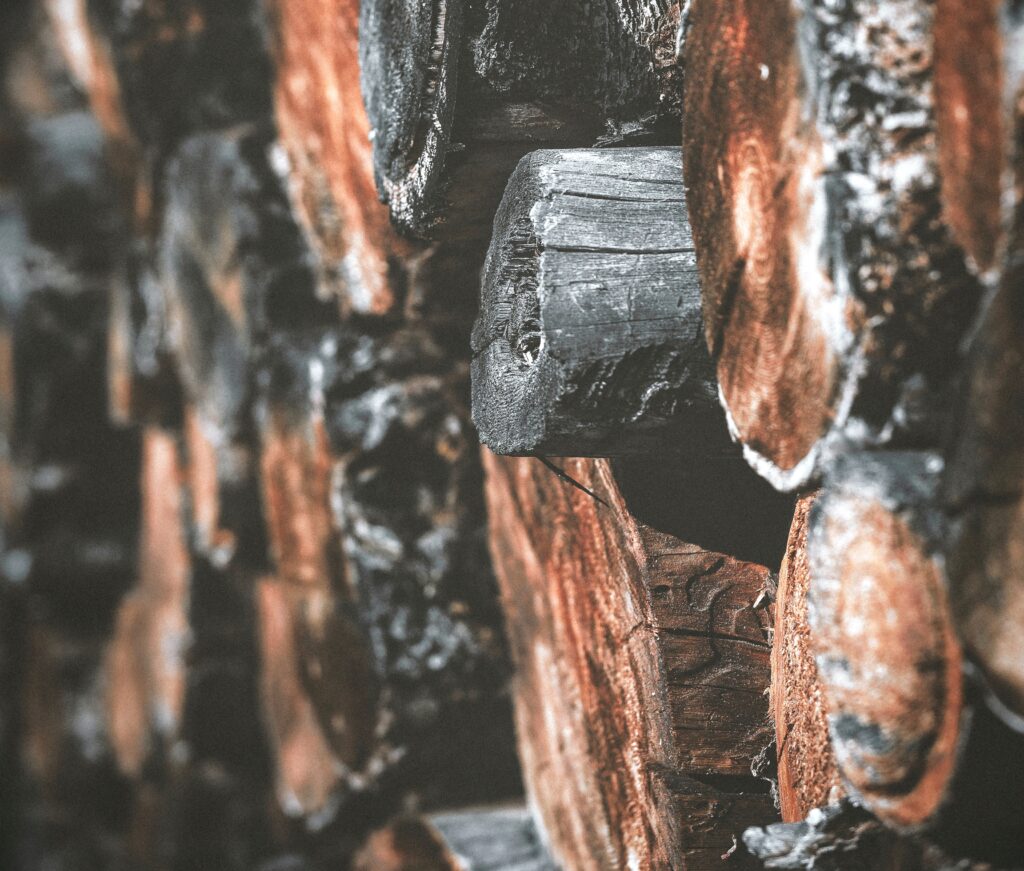When you buy solid timber furniture, you know you’ll have it for a long time. Furnishings can be created from a mixture of woods. If you’re planning to build or decorate your home, selecting the right kind of timber can be challenging among the many types of wood available.
Is it difficult for you to figure out which type of timber furniture to buy? This is the place for you! To help you choose the designer timber furniture for your home and style, we are here to assist you.
FACTS TO KNOW BEFORE
- While hardwoods are primarily used for flooring, decking, and timber furniture, softwoods are mainly used for framing and cladding.
- Timbers suit every budget—ash, oak, teak, and walnut are typically the most expensive, whereas softwoods are less expensive.
- Confer with the staff at your local hardware store or timber yard to ensure that you have the appropriate timber for your project.
TIPS FOR CHOOSING AN EXPANDABLE TYPE AND STAIN COLOUR:
The two most common types of timber used in furniture construction must be recognized. Hard and softwoods
There is no refuting that these phrases are deceptive. Softwoods and hardwoods aren’t always the same, nor are they ever the same. Botanical differences are the main differences between the two. Angiosperms (flowering trees) and gymnosperms (conifers) make up the two types of hardwoods and softwoods.
Hardwoods are, on average, more durable than softwoods, but this is not always the case. Because of their higher density, hardwoods typically outlast their softwood counterparts. Usually, hardwoods can be found in more expensive wooden furniture, decking, flooring, and building materials. Though most timber comes from softwood, softwoods are commonly used to construct window frames and other architectural elements.
The Wood Grain and Colour
Depending on the type of wood used to construct your hardwood furnishings, the patterns and colours will vary. The cell structure within the tree determines these patterns.
A tree’s wood contains two types of cells. Longitudinal cells are oriented parallel to the trunk’s axis. And the ray cells align perpendicular to the tree’s axis. The longitudinal cells give the grain, or the pattern you see when you cut it.
The type of grain that is visible is determined by the way the wood is cut. Additionally, there are numerous types of grain that you may notice in your hardwood furnishings.
- End Grain
The end grain is what is visible when a board is cut across the grain. This type exhibits densely packed lines.
- Plain Grain
Plain grain results if it is cut parallel to the natural grain but perpendicular to the growth rings. It is common on hardwood floors and flat sections of hardwood flooring.
- Quater Grain
Quarter grain is created by cutting wood parallel to the natural grain direction and through the growth rings. It is more consistent with minor pattern variations.
The type of grain also varies according to the tree. Certain trees exhibit a more defined grain than others. Each species will have a distinct pattern and colour.
HOW TO ASSESS YOUR HARDWOOD FURNITURE
Choosing hardwood furnishings for your home will be easier if you know exactly what you’re looking at. This will become easier with practice.
For example, timber from an ash tree is most likely what you’re looking at if you’re bentwood style. Compared to most hardwoods, ash is more forgiving when wet.
Poplar is the only tree that produces timber with a green tinge. On the other hand, Rosewood has a dark purple hue that matches its name.
Finally, take a look at the grain. Decide if they have open or closed grain. Is it curly? Does it follow the rules? Is it splotchy or wavy?
The grain patterns of different timbers will be covered in greater detail later.
VENEER, COMBINATION, OR SOLID?
Not all hardwood furnishings are constructed of solid wood. Some manufacturers layer a hardwood veneer over a composite board to reduce the cost.
While veneered furnishings may appear beautiful from the outside, they will not last as long as solid ones. If you scratch through the veneer by accident, you will leave a permanent scar that cannot be buffed or sanded away.
Another technique for lowering the cost of construction is to use a variety of timber species. Your furniture may not be entirely constructed of hardwood.
Certain manufacturers will use hardwood for visible surfaces and softwood for interior surfaces. When purchasing hardwood furniture, it is critical to inspect all surfaces to ensure that you are purchasing a genuine hardwood set.
HOW TO SELECT A SUITABLE STAIN FOR HARDWOOD FURNITURE
Stains are just as important as wood types when designing your furniture.
Make sure you choose a stain that complements both your walls and all of your other furnishings before staining them.
Stains come in two varieties: toxic substances such as pigments and dyes. Pigment stains are by far the most common.
To use dye stains on your furnishings, you’ll need a lot more experience and expertise. Many dyes are powdered and need to be dissolved in oil, alcohol, or water before being used.
With dye stains, it’s easy to accidentally streak or unevenly coat the surface.
Concerning staining, we recommend using pigment stains.
There is a distinct stain profile for every type of timber used in construction. A strange colour will result if you use the wrong stain.
WHAT IS THE BEST WOOD FOR FURNISHINGS?
When deciding on which wood grain and colour to use, it’s essential to understand the various types of wood used in furniture. The kind of timber you should employ for furnishings can be determined by multiple factors, including your desired aesthetic, financial situation, and the amount of use you anticipate the piece will see.
- Oak
Oak is a stunning, timeless, and incredibly versatile flooring material. As a result, it’s among the strongest timbers used in furniture.
It arrives in a broad spectrum of shades, from light to dark. The European Oak and its paler cousin, the American White Oak, are two of the most popular species, though there are also red oaks.
As a timeless piece of furniture, it fits seamlessly into various styles, from the light and airy Scandinavian aesthetic to the more modern, eclectic, and contemporary.
Oak coffee tables, for example, can be used almost anywhere, from rustic lodges to dingy factories.
Furniture made from pippy oak has a distinctive look and character to elevate even the most essential space.
It’s easier to work with, but it still has a lot of character and is an excellent option for incorporating natural elements into interior design projects.
Steam bending, glue, staining, and finishing are all possible with this tool, as are fantastic machining results. Because of its incredible strength, oak, resistant to fungal attacks, is a popular choice for any furniture project.
Because of this, oak species tend to be less expensive than other popular hardwoods for furniture.
- Walnut
American Black Walnut is a perfect pick for those who desire to add a dash of premium darkness to their homes.
Many people are drawn to this dark timber because of its strikingly beautiful colour, grain, and texture.
This wood’s deep brown and purplish tones combine with more sombre rustic and industrial decor.
Wooden furniture made from walnut, which has a brownish hue, is an excellent choice for traditional settings and Scandinavian-style interiors.
Walnut can be more expensive than some of its fellow hardwoods, so it’s essential to consider this.
- Maple
Timber species like American Hard Maple are just one of many dynamic pale kinds that produce beautiful furnishings because of their creamy white colour and warm golden hues.
The light, airy aesthetic of modern interiors, such as those found in Scandinavia, is ideal for the warm tones of Maple.
Due to their ancestry as cold-climate trees, maples are also incredibly hardy and robust trees. Maple is also non-toxic, in case you forgot.
When working with Maple, its dense nature can make things a little more difficult at times.
- Cherry
It is an excellent choice for country farmhouse or cottage-style interiors. Its luscious, warm pink-reddish brown tones will gradually darken with exposure to light over time. Any modern or Scandinavian design can benefit from this deep red-hued hue dash.
Cherry is an excellent option if you’re interested in woodworking and making your own furniture. This wood’s straight, stable grain makes it one of the best all-around to work with because it machines so well and is non-toxic.
Cherry is a good choice for curved designs because it can be easily steamed. Staining, however, can sometimes produce blotchy results, so consider first using a sealing sanding.
- Sapele
Sapele’s reddish-brown hues are another wood that deviates from the light side.
As a member of the same family, this looks and feels like genuine mahogany, making it an excellent substitute or alternative.
Sapele ensures iridescence, luxury, and opulence by default because it bends easily and works well.
- Zebrano
One of the most highly sought-after woods for furniture production, this species is also known as Zebrawood because of its distinctive dark stripes and unique markings.
For example, a mirror frame, coffee table, desk, worktop, or side table can be made out of this tropical African hardwood to make a bold statement in a room. As a result, it looks great in various interior design styles.
As a result of its interlocking grain, it is easy to saw, glue, and finish.
Slow-growing exotic species like Zebrano can cost more than more commonly available woods like Cedar, Oak, Cherry or Maple because they are more challenging to obtain.
- Mahogany
Mahogany, a beautiful timber for furniture, ranges from a reddish-brown to a deep red.
A common feature of antique furniture is that it is not common today because it is not sustainable.
Its straight grain and medium hardness make it ideal for joiners.
- Teak
Originally from Burma, Thailand, and Bangladesh, teak is a tropical hardwood.
For various ethical reasons, teak should only be used if it is recycled or comes from a plantation.
Teak is ideal for boat decks and outdoor furniture, with a waxy feel and a golden-brown colour. Even though slow-grown teak is probably the best for resisting sun and rain, it is now highly costly.
FAQ
1. What type of timber is most likely used for furniture?
Oak is one of the most commonly used materials for furniture. Available in two varieties—red and white—
2. Can you use different types of wood for furniture?
You can use any type of timber to make furniture; different types of timber (both hardwood and softwood) are available on the market.
3. How do I choose wood for furniture?
- Fibres that are straight, aligned, untwisted, and firm.
- At the edge, the rings should be oriented in the same direction.
- If you are unsure, sand the wood; sanding will reveal any fillers or stuffed wooden chips.
4. What wood has the most beautiful grain?
The grain patterns of red oak are more consistent and elegant, whereas white oak has a more subtle variant that is ideal for a clean look.

